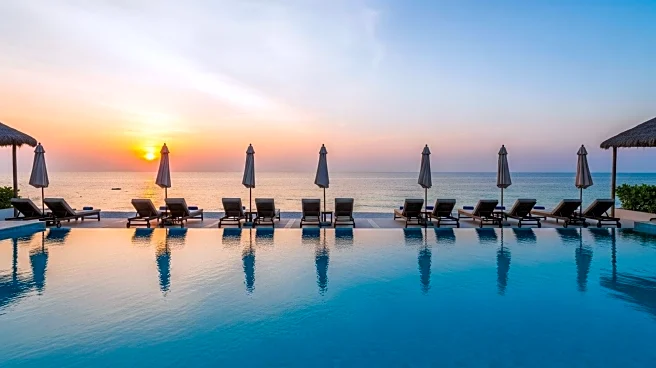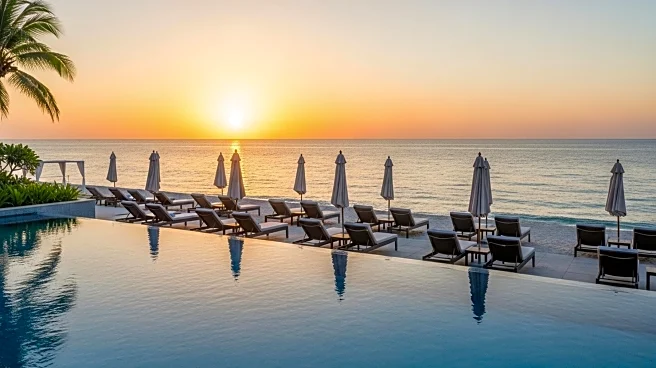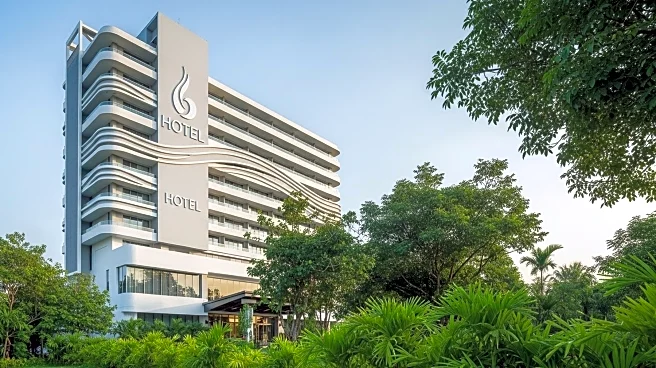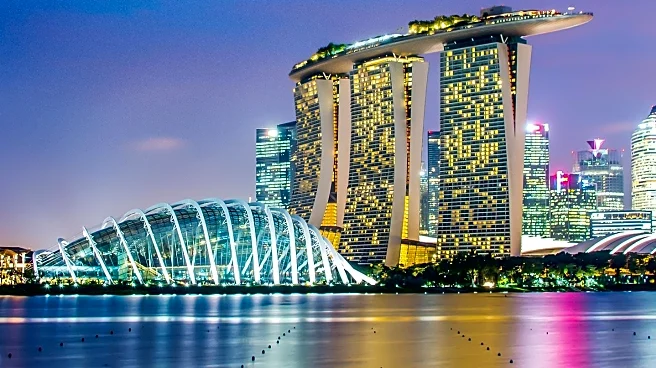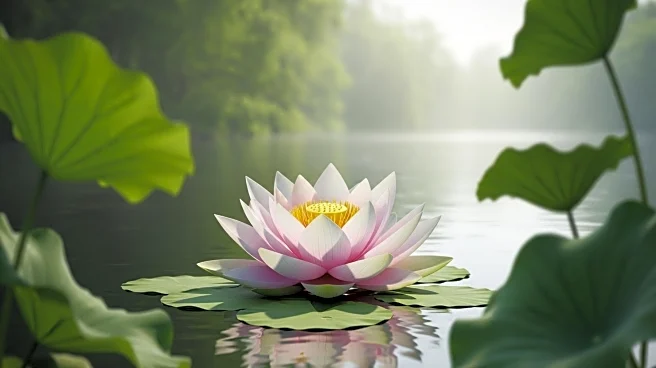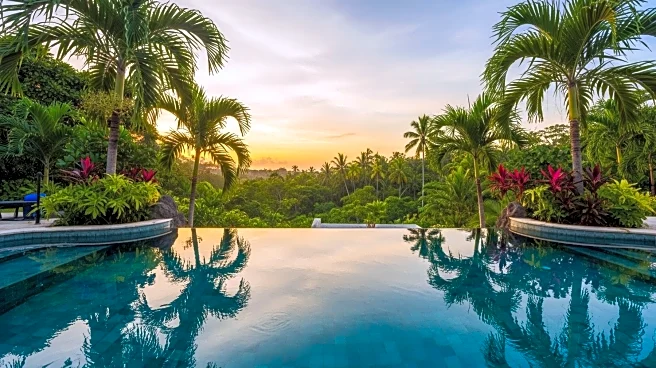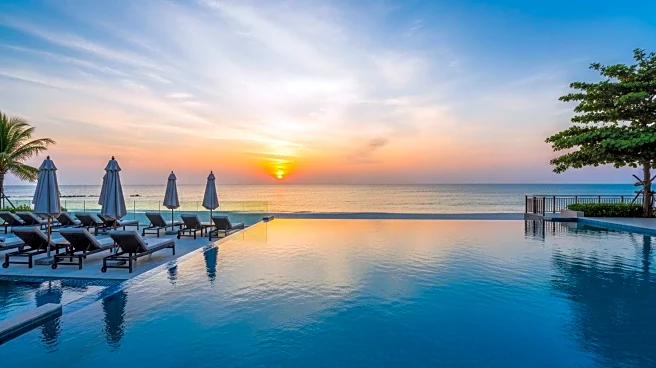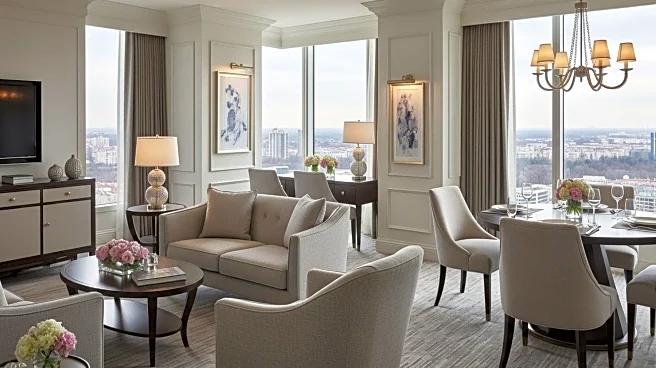What's Happening?
JW Marriott has inaugurated the JW Marriott Cam Ranh Bay Resort & Spa in Vietnam, marking its debut on the country's central coast. The resort is situated on Bai Dai Beach, also known as Long Beach, in Cam Ranh Bay, covering 22 hectares. It features 203 guest rooms and private villas, with design elements inspired by Asian traditions and the five natural elements: wood, fire, earth, metal, and water. The property boasts over 1,000 species of indigenous flora, and its architecture was developed by design studios AND, SUPER POTATO, and PIA. The accommodations include 27 one- to four-bedroom villas, ten of which are beachfront, each equipped with a private infinity pool and outdoor terrace. Dining options at the resort include Clay Craft, Seafood Grill, Bayside Bistro, Ocean Bar, Lobby Lounge, Baking Company, and The Pool Bar. The Pottery Club offers classes in traditional pottery techniques, enhancing the cultural experience for guests.
Why It's Important?
The opening of the JW Marriott Cam Ranh Bay Resort & Spa signifies Marriott International's strategic expansion in the Asia Pacific region, particularly in Vietnam. This development is likely to boost local tourism and economy by attracting international visitors to the area. The resort's focus on integrating local cultural elements and sustainable practices may set a precedent for future hospitality projects in the region. Additionally, the resort's diverse amenities and activities, such as the Family by JW program and The Pottery Club, cater to a wide range of guests, potentially increasing its appeal to families and cultural enthusiasts. This expansion could also create job opportunities and stimulate economic growth in the surrounding community.
What's Next?
As the resort begins operations, it is expected to attract tourists from around the world, contributing to Vietnam's growing reputation as a travel destination. Marriott International may continue to expand its presence in Vietnam and other parts of Asia, leveraging the success of this new resort. The integration of local cultural elements and sustainable practices might influence other hospitality companies to adopt similar strategies. The resort's opening could prompt further development in the Cam Ranh Bay area, potentially leading to increased investment in infrastructure and tourism-related services.
Beyond the Headlines
The resort's emphasis on local culture and sustainability reflects a broader trend in the hospitality industry towards responsible tourism. By incorporating traditional pottery techniques and indigenous flora, JW Marriott is not only enhancing the guest experience but also preserving cultural heritage. This approach may encourage other resorts to prioritize cultural and environmental sustainability, potentially leading to a shift in industry standards. The resort's design and amenities could serve as a model for future developments, promoting a balance between luxury and ecological responsibility.

